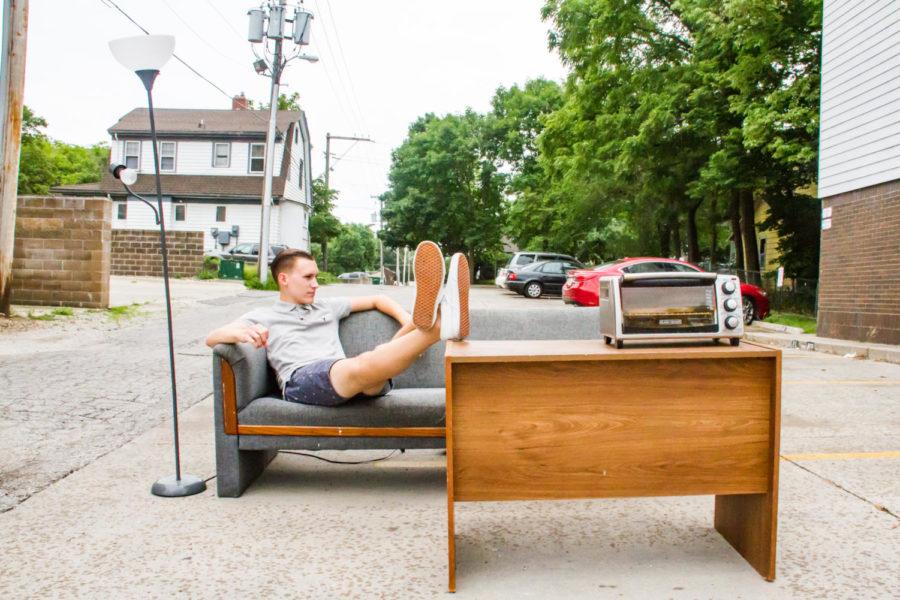Salo: The lease gap may not be an easy fix
July 25, 2017
July 31 – You’ve packed all of your belongings and are officially moved out of your apartment. You’re ready to move, but your apartment isn’t ready for you.
Your lease for this upcoming school year doesn’t start for a few days – where will you go?
A hotel? That’s expensive. Temporary housing? There’s only limited beds available. Home? If it’s in Iowa, it could make sense for you to go home and then come back, but what about your job in Ames? Is your employer ok with you taking off however many days for you to move out, be gone for those few days and then another day for you to move into your new apartment? Your friend’s couch? What if all of your friends are in the same situation?
Will you just stay in your car?
This is the problem that Ames students face every August when they experience a lease gap.
Most management companies try to keep the lease gap to just one day. For example, First Property Management’s move-out day is July 31 and their move-in day is Aug. 1. Some of Hunziker Properties’ move-out day is Aug. 15 and their move-in day is Aug. 16.
In the large scheme of things, one night isn’t that hard to figure out unless someone is in a situation where they don’t know anyone living in or near Ames, can’t afford a hotel and temporary housing is booked.
But what if they’re moving from a unit owned by First Property to a unit owned by Hunziker that doesn’t open until Aug. 16? That’s half of a month that these students need to figure out where to live and store their belongings.
Of course, students know the dates that their lease will end and when their next one will begin when they’re signing their leases, so they would need to plan ahead for the gap. But why should they have to plan ahead? Why can’t we just fix the problem?
This problem isn’t isolated to Ames. A Google search of “apartment lease gap” brings up various sites with people asking for advice on what to do during this time, as well as storage and moving companies advertising to people stuck in a lease gap.
Pete Englin, the director of the department of residence at Iowa State, said that the lease gap has been a problem in Ames since around 2011 or 2012.
When tenants move out of their apartments, the property managers of that unit need to go in to clean and inspect the apartment to ensure that everything is not only working in the apartment, but that it’s also safe for someone else to move in.
“It typically would take about two hours, depending on how long [the tenants] lived there,” Englin said. “And then it depends on whether you’re cleaning the carpets, which you’ll often want to do, then if you need to touch up walls or paint them – It’s really how extensive you want to go in.”
So although it’s an inconvenience to tenants, property managers need time to make sure the apartment is livable for the next tenants.
If we can’t completely eliminate the lease gap, then what can be done to ensure that students aren’t sleeping in their cars or on their friends’ couches for weeks at a time?
The university has already offered temporary housing this year, but that can only accommodate for 60 students at $35 a night.
This is the first year that the university is offering this service for students and are using the 60 spots as a starting point to determine if they need more or less spots in years to come.
“When we got into this, it was a matter of how popular will it really be? How far can we stretch staff even more than we already do to get our current facilities clean?” Englin said.
Englin said that after this trial year, everyone involved in the temporary housing will meet to discuss changes for next year.
Two of those involved are Student Body President Cody West and Vice President Cody Smith. One of West and Smith’s platforms for their campaign was to reinvent residency by dealing with the lease gap.
“While sleeping on a friends couch may not be bad for a few nights, the extended periods of time relying on another person can place a burden on numerous students,” West said. “We have even heard stories of students staying in their cars for weeks at a time, which is simply unacceptable.”
So, West and Smith decided to do something about the problem.
“When we had our joint City Council and Student Government meeting last fall, I brought it up to the City Council members, and all of them, it was an issue they had never heard of,” Smith said in a past interview with the Daily. “It was something that wasn’t even on their radar.”
City Manager Steve Schainker explained that city government wasn’t aware of the problem because this issue isn’t regulated by city government.
Although Schainker agreed that the lease gap is an inconvenience for students, it’s not something that city government can control.
“[Determining leases] is usually a private transaction,” Schainker said. “I don’t know if it’s even possible for the city to get involved, quite frankly.”
This is a complex problem that is going to take a lot of work to even begin solving. The students, the university and the property management companies need to work together in order to make the lives of everyone involved easier.
It may be too late to help the students affected by the lease gap this year, but it should be a goal for all of Ames to have a solution by next August.







